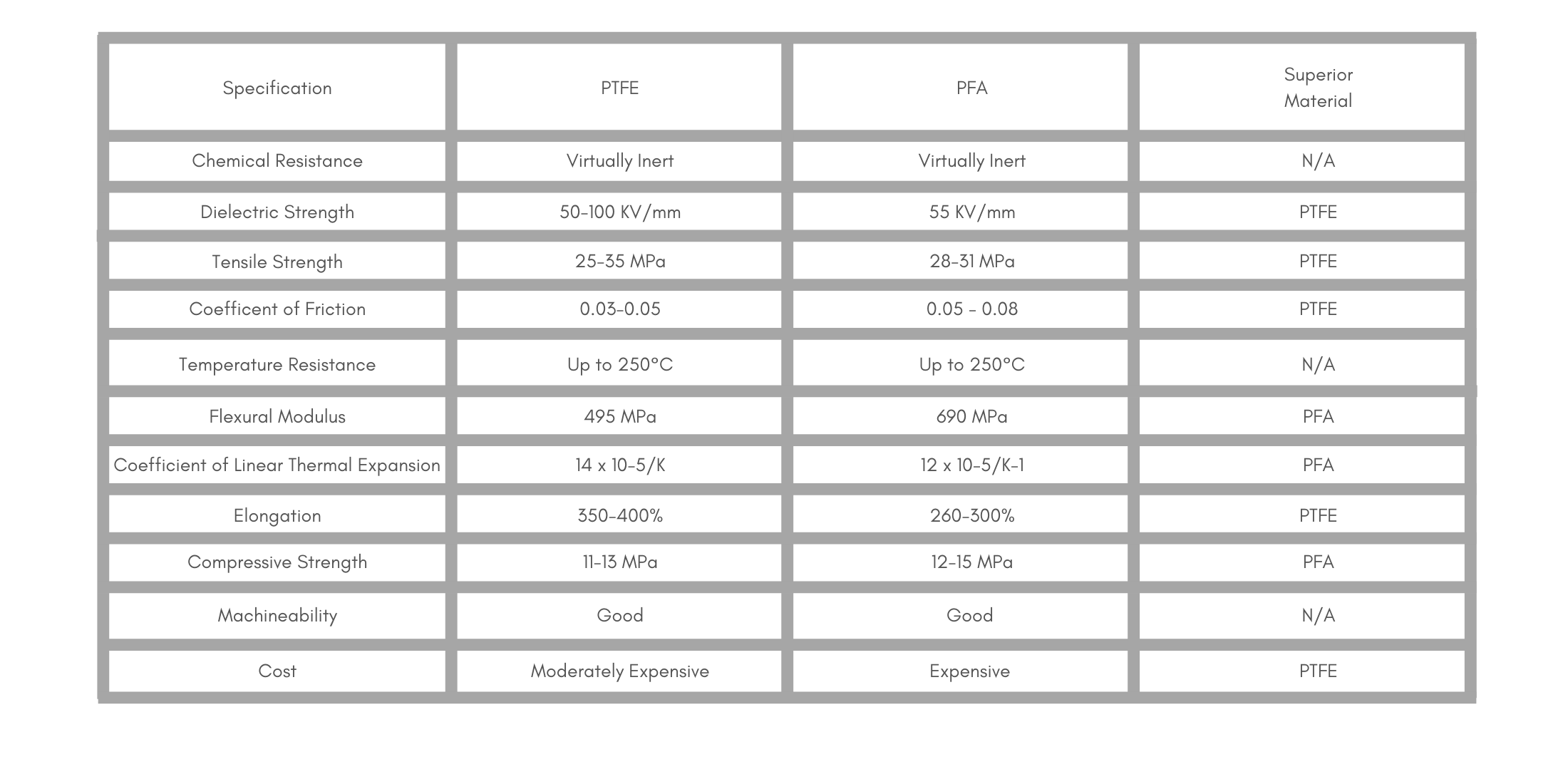PTFE vs PFA
December 2020

Fluoropolymers share several unique properties which make them suitable for use in the automotive, aerospace, oil and gas and medical industries.
PTFE, PFA and FEP are the most well-known and common fluoroplastics. So what, exactly, are their differences?
PTFE is a versatile and cost effective material of average tensile strength. It has very good thermal properties and excellent chemical inertness, especially to strong acids. The coefficient of friction is unusually low and believed to be lower than any other solids. PTFE is an outstanding electrical insulator over a wide range of temperatures and frequency. The main disadvantage of PTFE is that it does not actually melt when heated and is therefore difficult to process.
PFA and FEP are co-polymer products of PTFE, making them melt-processable versions of PTFE. PFA is a high temperature version of FEP, and with a working temperature of +260°C, PFA enjoys the highest working temperature for any fluoroplastic.
Because of the high strength between Carbon, Fluorine and Oxygen atoms, PFA exhibits similar properties to PTFE over a large range of temperatures. Some other advantages over PTFE are: Good permeability resistance because of lower void content, and better deformation (Cold flow) resistance.
Although PFA has an outstanding chemical resistance, it will react with fluorine and molten alkali.
The main disadvantage of PFA is that it is more expensive than PTFE and FEP.
PTFE and FEP have very similar properties, however, FEP can be more easily processed and can be simply welded and re-moulded into complex profiles.
Compared to PTFE, FEP has a lower maximum operating temperature of +200°C and a minimum operating temperature of -200°C FEP. At cryogenic temperatures FEP remains flexible which, like PTFE, is an advantage for seals.

To find out how we can support your projects contact info@fluorocarbon.co.uk










